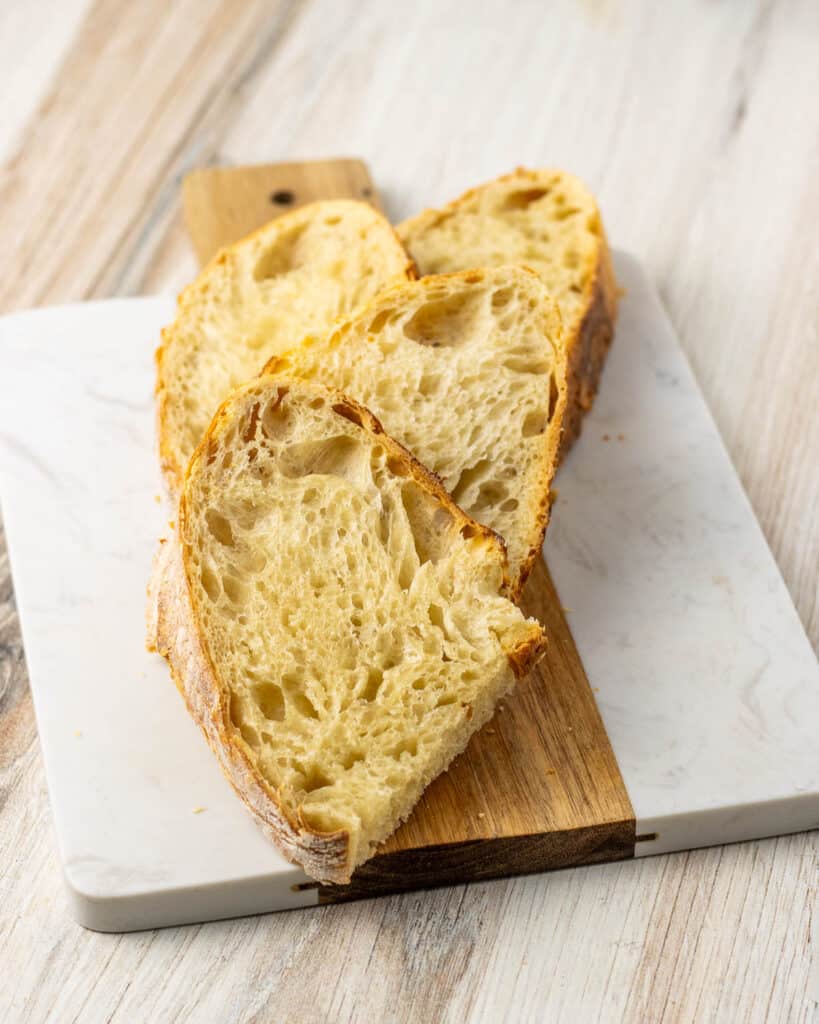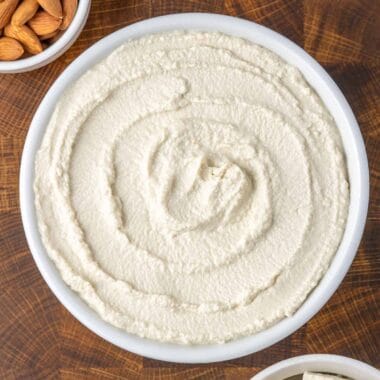An easy, beginner-friendly sourdough bread recipe. Requires only 4 simple ingredients.



Beginner Sourdough Loaf
An easy, beginner-friendly sourdough bread recipe. Requires only 4 simple ingredients.
Print
Pin
Equipment
- large mixing bowl
- wooden spoon or spatula
- sharp knife or bread lame for scoring the loaf
Ingredients
- 80 g bubbly, active starter fed 4-12 hours prior, depending on ambient temperature
- 280 g lukewarm water (roughly 110°F)
- 360 g bread flour
- 9 g sea salt
Instructions
Before you start:
- Your starter should be active and bubbly when you mix the dough, so aim to feed it 4-12 hours prior to starting the recipe. If it's chilly in your kitchen, or if you are just removing your starter from the fridge, it will need an extra hour or 2 to reach peak activity, so make sure to plan ahead.
- Float test: If you're unsure whether your starter is ready to use, place a small piece of it in a cup of water. If it floats, it's ready.
Mix the dough
- In a large mixing bowl, whisk together water and sourdough starter to dissolve.
- Add in the flour and salt and stir to form a shaggy dough.
Stretch and fold
- Cover the dough and allow it to rest for 20 minutes, then perform a stretch and fold. Wet your hands to prevent the dough from sticking to you. Grab one edge of the dough, gently stretch it upward as far as it will go without tearing, then fold it across the dough. Rotate the bowl slightly and repeat 4-5 more times around the entire perimeter of the dough. Cover the dough and rest for 20 more minutes.
- Every 20 minutes, give the dough another stretch and fold until you have performed a total of six. Over this time, you should see (and feel) the dough become much stronger, smoother, and more elastic as you develop the gluten.
Bulk Rise
- Cover the dough and allow it to rise in a warm spot until at least doubled in volume. The exact time will vary depending on the ambient temperature. It can take as few as 3 hours in a very warm kitchen, or as many as 8 if it’s particularly chilly. It’s important to judge by the size of the dough rather than a specific time frame. It usually takes around 6 hours in my kitchen.
Pre-Shaping
- Once the dough has doubled in volume, turn it out onto a lightly-floured work surface. Working around the entire perimeter of the dough, fold the edges in toward the center (4 or 5 times). Flip the dough over so the seam side is down. Cover the dough (I usually just place the mixing bowl upside-down over it), and allow it to rest 20-30 minutes before final shaping.
Final Shaping
- Flip the dough back over and gently stretch it into a square shape. Fold the left and right edges of the dough together toward the center to form a long rectangle. Then, starting at the short end closest to you, roll the dough into a log. Tuck the seams underneath on the left and right.
- Optional: Pull the loaf towards you while rotating it slightly, allowing it to drag on your work surface.
Cold Ferment
- Flour the top of the shaped loaf and place it upside-down in a floured banneton. (If you don't have a banneton, you can use a large mixing bowl or a colander. Line it with a lint-free kitchen towel or parchment. Generously flour the loaf first if using parchment as it tends to stick.)
- Cover the loaf and place it in the fridge overnight, or for at least 8 hours.
Bake
- The next morning, preheat your oven to 500°F. Place your Dutch oven inside and allow both to preheat for about 1 hour. (We need the Dutch oven to be very hot to get the best oven spring.)
- Once the Dutch oven has been thoroughly preheated, remove your loaf from the fridge. Turn it out, seam-side down, onto a sheet of parchment on a work surface. (The parchment is optional but makes it much easier to move the loaf into the hot Dutch oven.)
- Brush off any excess flour from the top of the loaf.
- Use a very sharp knife or lame to score the bread. (If the knife is not cutting easily, it can sometimes help to wet it first.)
- Once you've scored the dough, carefully lift up the parchment paper and drop the loaf into the hot Dutch oven. Place the lid on top and then place it back into the oven.
- Reduce the heat to 450°F and bake the loaf covered for the first 15 minutes.
- Remove the lid, reduce the heat to 375°F, and cook for another 20 minutes, or until the loaf is as deep golden brown as you like.
- Remove the loaf from the oven and transfer it to a cooling rack once it's cool enough to touch. It's very important to allow the loaf to cool for at least an hour before cutting into it! The bread is still cooking internally and the texture will be very undercooked and gummy if you cut into it too early.
Did you make this recipe?We’d love for you to leave a review on the website! You can also share a photo on IG and tag @sarahsvegankitchen_ or #sarahsvegankitchen.


